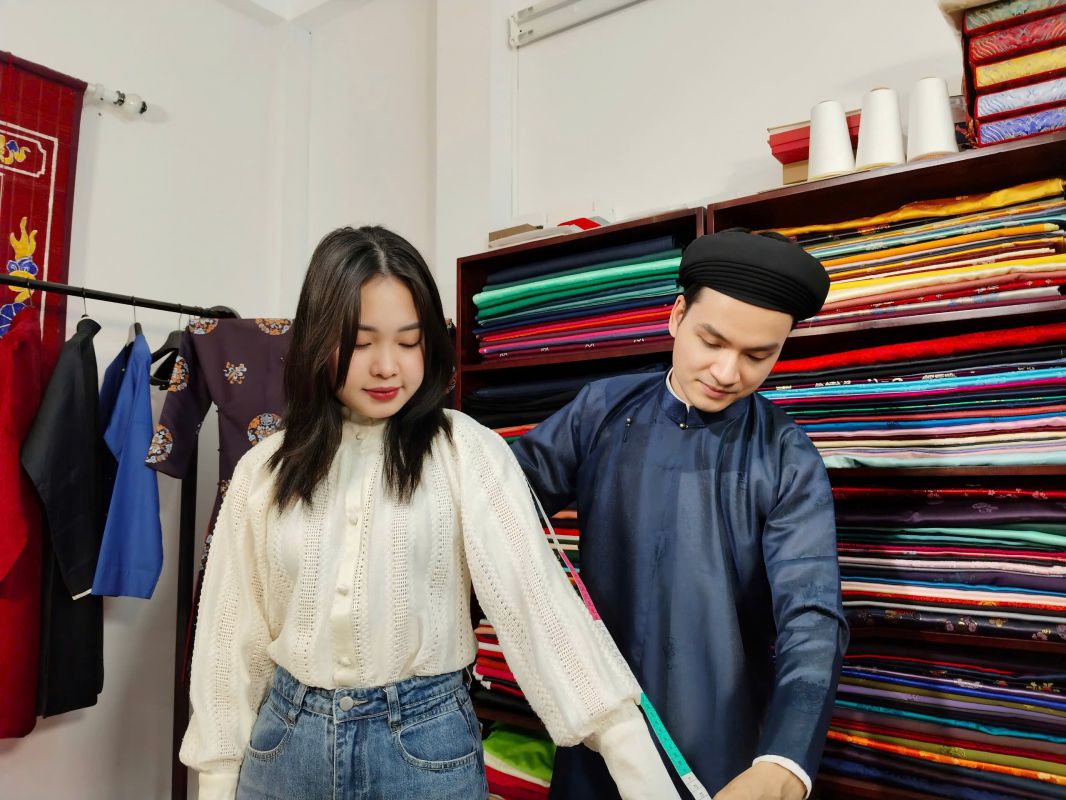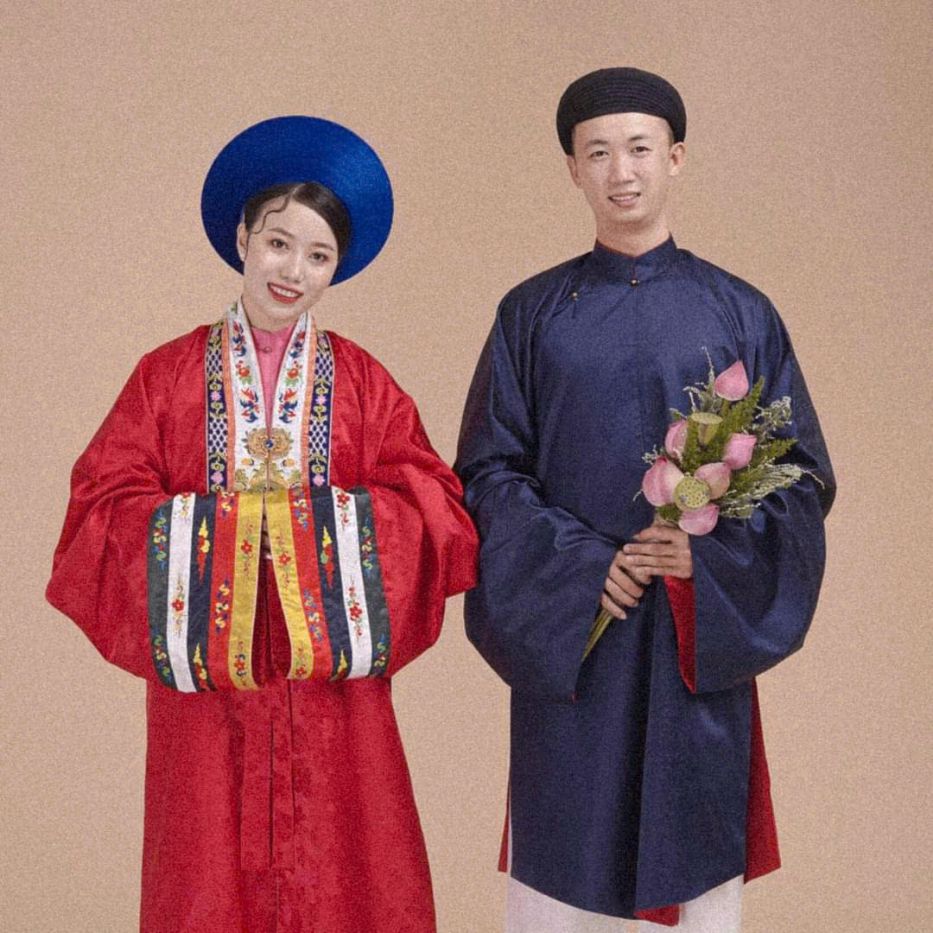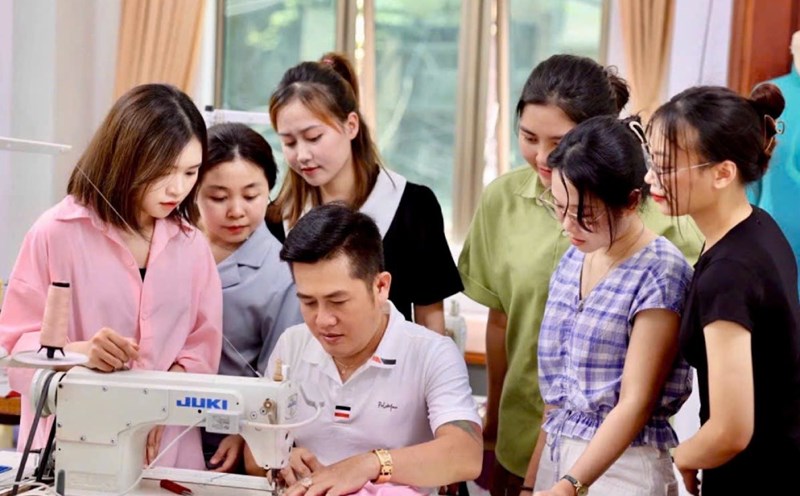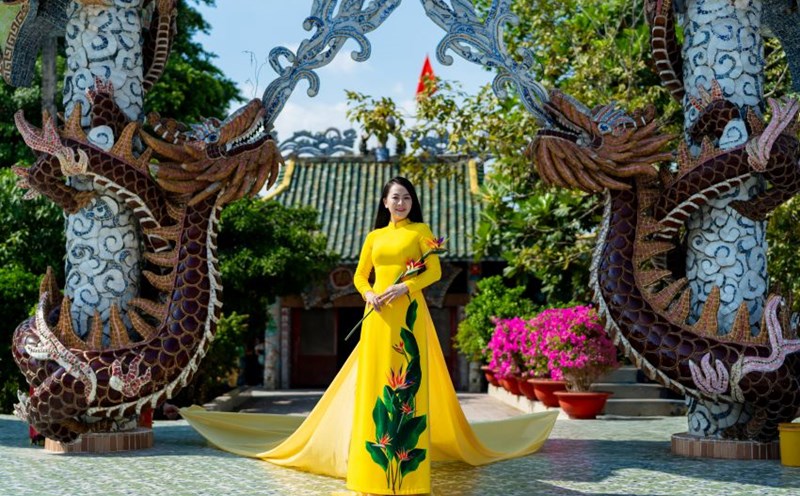The word "fate" changes life
Since his childhood, Hoang Minh Truc has expressed his love for handicrafts. But his journey to find an ancient ao dai began not only from personal passion, but from a special word "fate".
Designer Truc shared: "Thanks to meeting friends who share the same belief in the current variation and variety of traditional costumes, I realized that the legacy of our ancestors is gradually fading and fading away".
It was those emotions that urged him to start researching and recreating the ancient ao dai, an outfit imbued with cultural values and national spirit. The first ao dai born was given by Minh Truc to that spirit child the name "Thuong Y Nhat Linh", which translates these four words simply as "a shirt".

Old ao dai is not only an outfit, but a symbol of elegance with the long-standing Vietnamese culture. Hoang Minh Truc defines ancient Ao Dai as a historical symbol, carrying a story about the tradition and virtue of the Vietnamese people.
Since the reformation of the province's costumes, when using only scarves and wrapping around the head to tie the hair long and neat, while also protecting against the harsh sun. Regardless of gender, there will be different material color sizes. By the early 20th century, when Vietnamese men no longer have long curls but shorten them, scarves were turned into scarves (sometimes called scarves).
Towels for men are convenient. Thin thin fabric arbitrary, used to fix the hair. The first and second round is usually arranged on the forehead into the best character. Especially straight on the forehead, and the word multiplied by two crusts with the left stick on the right sticky rice. The towel is wrapped in five or seven rounds to clearly stick regularly on the forehead. These two entrepreneurships borrowed the idea in the conons of Confucianists as the root, in order to show respect, the basic ethical principles.
Women's towels are as convenient as men. The fabric is not too long, hugging the hair length, wrapped around the head to keep the hair neat. In addition, the color of the towel changes with each corresponding ceremony, creating charm and solemnity, to see the sophistication in the old way of dressing.
The fabric materials that Hoang Minh Truc uses are carefully selected from traditional craft villages such as Van Phuc, La Khe, Ma Chau... Accessories such as scarves or each shirt button are also of interest to him, bringing sophistication and completion to the product.
Designer Hoang Truc also explained the difference between ancient ao dai and modern ao dai: In the past, due to the narrow fabric, often having to combine the pieces together along the waist of the shirt, ao dai was also called a five-panel ao dai, in some places called a bodyless ao dai.
Different from modern ao dai styles, ancient ao dai is often worn during holidays, Tet, and traditional events. The old ao dai (four-tone, five-tone) and the modern ao dai (nhen ao dai) each have their own beauty".
Difficulties on the way to bringing old ao dai to the world
It is the meticulousness and ingenuity in the design of the old long dress that creates its uniqueness. However, the journey to restore the traditional ao dai is also not lacking in challenges and difficulties. Designer Minh Truc recounted: "The biggest difficulty is lack of documents, lack of control and visual artifacts. Finding fabric is the same as in the past is also a significant challenge. I have to order each type of fabric, dye color on demand and find a metallic worker to make accompanying accessories.
Not only a designer, Truc is also a person who conveys cultural stories through each ao dai. He confided: "I want old ao dai not only to exist in museums or books. Ao Dai needs to be put into life, especially among young people so that they understand and love national culture, thereby preserving and promoting their identity".

The customers of "Thuong Y Nhat Linh" are mainly young people, artists, diplomats, and overseas overseas Vietnamese. One of the clear evidences that traditional Vietnamese culture is increasingly being loved.
Designer Hoang Minh Truc also dreams of bringing ancient ao dai to the world, so that international friends can better understand the identity of Vietnamese costumes. With the support of social networks, his ao dai has now appeared at cultural events and traditional festivals in many countries, contributing to introducing Vietnamese culture to international friends.











